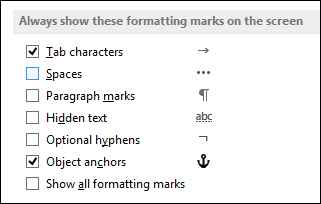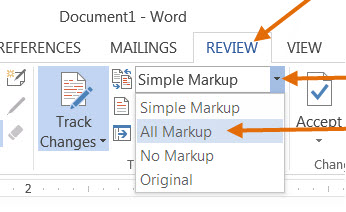

Using wdDoc As WordprocessingDocument = WordprocessingDocument.Open(docName, True) ' Given a document name, delete all the hidden text. Public Sub WDDeleteHiddenText(ByVal docName As String) Xdoc.Save((FileMode.Create, FileAccess.Write)) Save the document XML back to its document part. XmlNode topParentNode = topNode.ParentNode XmlNodeList hiddenNodes = xdoc.SelectNodes("//w:vanish", nsManager) įoreach ( hiddenNode in hiddenNodes) Load the XML in the document part into an XmlDocument instance. Get the document part from the package. NsManager.AddNamespace("w", wordmlNamespace) XmlNamespaceManager nsManager = new XmlNamespaceManager(nt) Manage namespaces to perform XPath queries. Using (WordprocessingDocument wdDoc = WordprocessingDocument.Open(docName, true)) Given a document name, delete all the hidden text. public static void WDDeleteHiddenText(string docName)
#Display hidden text in word 2010 code#
Select the Hidden box and click OK.įollowing is the complete sample code in both C# and Visual Basic. In order to hide part of the file text, select it, and click CTRL+D to show the Font dialog box. This example assumes that the file Word14.docx contains some hidden text. Named "Word14.docx." string docName = docName As String = "C:\Users\Public\Documents\Word14.docx" The following call as an example to delete the hidden text from a file You can call the method, WDDeleteHiddenText, by using
#Display hidden text in word 2010 how to#
The following code example shows how to remove all of the hidden textįrom a document. If given a value of on, 1, or true the property is turned on. The val property in the code above is a binary value that can be The following XML schema segment defines the contents of this element.

Of this run, so the contents of this run will be hidden when theĭocument contents are displayed. This run declares that the vanish property is set for the contents Specified using the following WordprocessingML: Property turned on for the contents of the run. [ Example: Consider a run of text which shall have the hidden text Not be hidden when displayed in a document. If thisĮlement is never applied in the style hierarchy, then this text shall If this element is not present, the default value is to leave theįormatting applied at previous level in the style hierarchy. This formatting property is a toggle property (§17.7.3). Setting should affect the normal display of text, but an applicationĬan have settings to force hidden text to be displayed. Hidden from display at display time in a document.

This element specifies whether the contents of this run shall be The following information from the ISO/IEC 29500 specification Results in keeping the current setting unchanged. Style definition, setting this property toggles its current state. Which means that its behavior differs between using it within a styleĭefinition and using it as direct formatting. The Hidden formatting property is a toggle property, The vanish element plays an important role in hiding the text in a The container for the block level structures such as paragraphs, tables, annotations and others specified in the ISO/IEC 29500 specification. The root element for the main document part. The following table lists the class names of the classes thatĬorrespond to the document, body, p, r, and t elements. Using the Open XML SDK 2.5, you can create document structure andĬontent using strongly-typed classes that correspond to WordprocessingML elements. Markup for a document that contains the text "Example text." The r stands for run, which is a region of text withĪ common set of properties, such as formatting. A paragraphĬontains one or more r elements. The basic document structure of a WordProcessingML document consists of the document and bodyĮlements, followed by one or more block level elements such as p, which represents a paragraph. Because the WordprocessingDocument class in the Open XML SDKĪutomatically saves and closes the object as part of its System.IDisposable implementation, and becauseĮxit the block, you do not have to explicitly call Save and Close─as Statement establishes a scope for the object that is created or named in Used by the Open XML SDK to clean up resources) is automatically called The using statement provides a recommendedĪlternative to the typical. WordprocessingDocument.Open(filepath, True) Using wdDoc As WordprocessingDocument = _ WordprocessingDocument.Open(fileName, true)) The Boolean parameter set to true in order Statement, you open the word processing file with the specified To open an existing document, you instantiate the WordprocessingDocument class as shown in the The following assembly directives are required to compile the code in Office to programmatically remove hidden text from a word processing This topic shows how to use the classes in the Open XML SDK 2.5 for


 0 kommentar(er)
0 kommentar(er)
